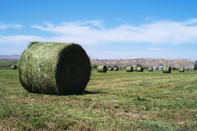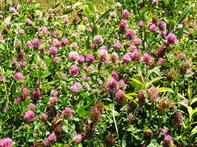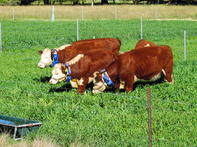Legumes can be divided into warm-season and cool-season legumes, depending on the season when they grow best.

Choosing the right pasture legume to suit the farm’s climate, water potential and soil type is essential. The end use of the legume should also be considered when planting a pasture - will it be used for grazing, hay or silage?
Legumes Pastures in South Africa

As warm-season annual legumes of high quality, both soybeans or cowpeas can easily be used in a summer forage grazing system. Cowpeas can contain 14 - 24% protein, depending on the growth stage. Lucerne is a cool-season legume growing throughout the summer with a protein content of 16 - 18%.
Lucerne pastures are widely planted but mostly used for hay production although it is growing in importance as a dryland grazing legume in some parts of South Africa. Other popular legumes for pastures are annual Medicago and clover species in the Western Cape and white and red clover in high potential areas and under intensive irrigation.
Management of Legumes as Pastures

Pasture legumes require some management. Organize livestock in the first year after planting to limit grazing until the pasture starts to seed and allow only light grazing once or twice during the first summer/autumn.
‘Pasture bloat’ in livestock is caused when a forage consists of more than 50% legumes, particularly white clover and lucerne or when livestock are grazing in wet pastures. Berseem clover is a low risk for causing bloat. Increase dry matter intake and supply an anti-bloat lick.
Pasture legumes are most productive for 3 - 5 years thereafter a 'rundown' can be experienced when plant-available nitrogen in the soil is no longer available. Fertilisation might limit ‘rundown’. Phosphate, potassium and soil pH are important for legumes.
Please note: Information is for educational and informational purposes only and may not be construed as planting, feeding or nutritional advice. For more information on feeding your animals or planting pastures contact your animal health technician or seed supplier.
By Marinda Louw